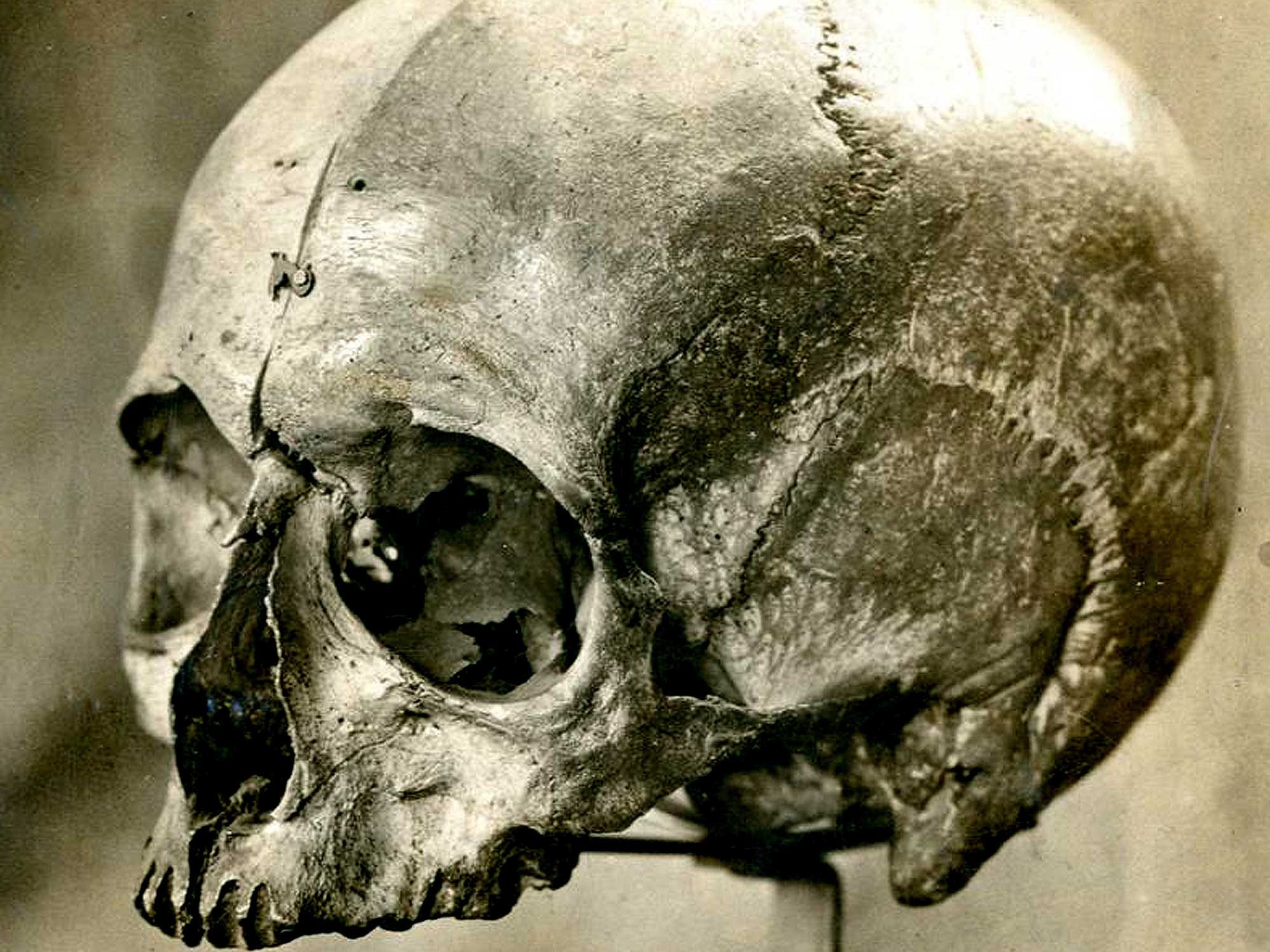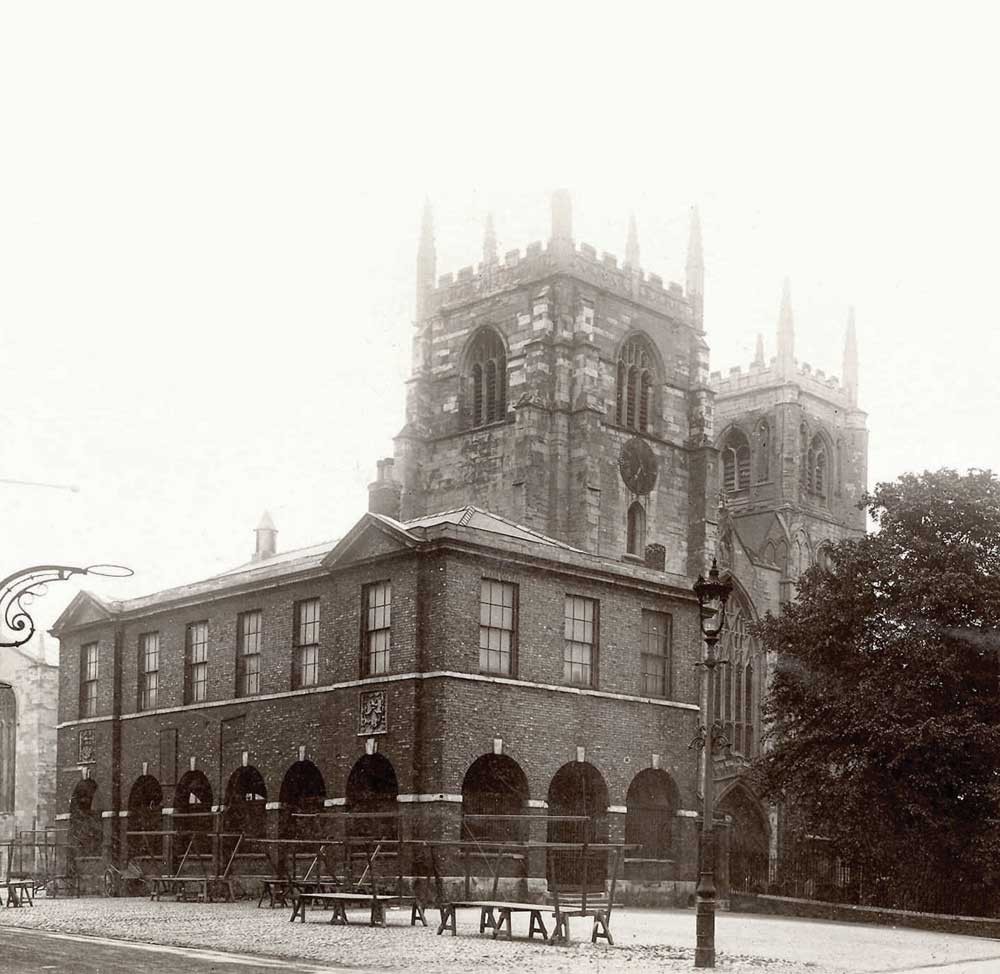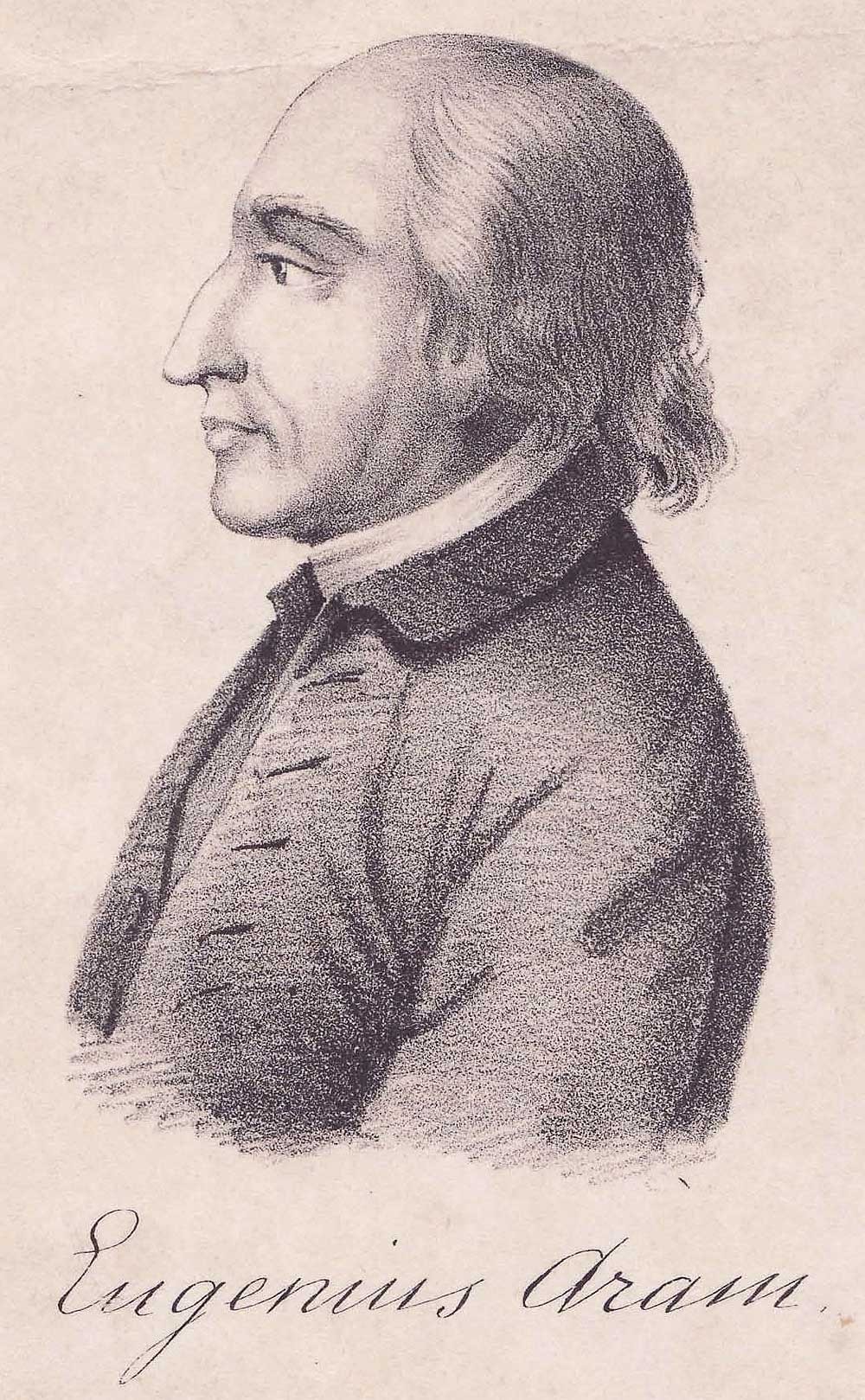
The schoolteacher who hid a deadly secret
He may have been a notable academic with a promising future, but when Eugene Aram was arrested at his King’s Lynn school in 1758 he found himself in the history books for another reason entirely
In February 1758, King's Lynn Grammar School welcomed its new usher (second schoolmaster), who'd been appointed following the recent dismissal - for unknown reasons - of John Birkes. The school itself was housed in the 14th-century Charnel Chapel on the Saturday Market Place adjacent to the church of St. Margaret's (today's Minster) and the new teacher was a certain Eugene Aram, who came to the school with very impressive qualifications.
Although he'd been born to humble parents in 1704 at Ramsgill in Yorkshire, the young Eugene's love of reading meant that while confined to bed after a bout of smallpox he was able to teach himself mathematics, poetry, history and the classics. He had a particular talent for languages (he also taught himself Syrian and Arabic), and his great ambition - one he was never to realise - was to be called A Comparative Lexicon of the English, Latin, Greek, Hebrew and Celtic Languages.
In fact, Aram was something of a pioneer when it came to the study of languages. He realised that Celtic was related to other European languages, something that wouldn't become officially recognised for another 100 years - and was correct in disputing the accepted view that Latin was derived from Greek.
At first, he seemed something of an academic coup for King's Lynn. But there was a lot more to Eugene Aram than met the eye. Back in his home town of Knaresborough, he'd left behind a wife, seven children, and a cloud of suspicion that had been following him around the country for 14 years.
Back in 1744, Aram had become embroiled in a local scandal when a shoemaker called Daniel Clark suddenly disappeared, leaving behind a considerable amount of debt and a variety of valuable goods that hadn't been paid for.
As one of his closest friends, Aram had been questioned about the activities of the swindling shoemaker - but could shed no light on his current whereabouts. The discovery of some of the missing goods in his garden may have been a little compromising, but Aram said that Clark himself had left them there, and with no evidence to suggest otherwise, the official enquiries ended there.
Despite a considerable 'no questions asked' reward for any information, it seemed that Clark had simply vanished off the face of the earth - but as Eugene Aram suddenly started to clear his own debts, people started talking. In fact, Aram became the subject of so much gossip he left Yorkshire (together with his wife and children) to take up a variety of teaching jobs around the country - eventually arriving in Norfolk.
But if Eugene Aram thought a teaching post in King's Lynn could put the affair behind him, he was sorely mistaken. In the very same month he started work (February 1758) a workman in his hometown was digging for stone to supply a nearby lime kiln and uncovered a human arm bone and part of a leg bone. Digging further, he revealed a whole skeleton.
As far as the Knaresborough police were concerned, no one had gone missing for around 60 years - but the police had never forgotten about the strange disappearance of Daniel Clark. They went to see Mrs. Aram, who'd long held the suspicion that her husband knew far more about the matter than he'd said. Indeed, the woman was convinced her estranged husband had actually murdered the man.
When other witnesses confirmed Daniel Clark was last seen alive in the company of Eugene Aram, constables John Barker and Francis Moore were sent south to King's Lynn.

On arriving at the school, they asked the new schoolmaster if he knew of Knaresborough or had ever heard of Daniel Clark - both of which Aram initially denied. Not surprisingly, he was arrested on the spot.
Throughout the journey back to Yorkshire, Aram protested his innocence. Yes, he admitted that he really had known known Daniel Clark, but he had no connection with the shoemaker's fraudulent activity, and had no idea what had happened to him. As far as he was concerned, he hadn't seen Clark since February 1744 - and no, it wasn't true that he'd tried to get a number of people to say that they had.
Circumstantial it may have been, but the evidence against Aram was compelling, and his three-day trial for murder started on 3rd August 1759. When the opportunity arrived for the accused to defend himself, Aram preferred to give his evidence in the form of a prepared statement.
"I have never seen a court but this, and I am wholly unacquainted with the law and judiciary proceedings," he read. "I fear I shall be so little capable of speaking with propriety that it exceeds all my hope if I shall be able to speak at all."
Despite his misgivings, he managed to speak quite well.
He pointed out it was extremely unlikely a man of such education and academic standing as himself would be involved in murder. He questioned the lack of motive (claiming to be more interested in study than material wealth) and disputed the notion that Daniel Clark was even dead.
He gave a number of examples of other 'suspicious' skeletons that had been dug up recently but had actually been in the ground for many years - a skeleton unearthed at Woburn Abbey in 1744 still had some flesh on the bones that showed evidence of knife cuts - but it had been underground for at least 200 years.
"Almost every place contains such remains," he told the court. "In fields, in hills, in highway sides and in commons lie frequent and unsuspecting bones."
Indeed, his home town of Knaresborough was once home to a military garrison - there were probably skeletons all over the place. Trying to identify them, he said, was an attempt to "determine what was indeterminable."
Moreover, he gave several examples of people who had disappeared before in suspicious circumstances - only to reappear alive and well many years later.
Coming as it did 134 years before anyone had heard of fingerprints, 150 years before anyone could identify different blood types, and over 200 years before someone would be convicted on the basis on DNA evidence, disputing the bones in evidence appeared to be a valid argument.
Where was the proof that Daniel Clark was dead? Where was the proof that these were his bones? And where was the proof that Aram had anything to do with either?
Unfortunately for the learned schoolmaster, however, the jury weren't convinced. They found him guilty, and didn't even have to leave the court to do so.
In the week or so before his execution, Aram wrote an account of his life - concentrating on his academic achievements, the books he'd read and the ones he'd planned to write, and leaving out any reference to the events that would guarantee his place in the history books.
Eugene Aram was hanged in York on 16th August 1759, the day after an unsuccessful suicide attempt, and his body was hung in chains in Knaresborough Forest.
When the forest was enclosed 20 years later, the scaffold was bought by a local carpenter who used it for the renovation of the nearby Brewer's Arms - by which time the skeleton of Eugene Aram had disappeared.
Apart from his skull, that is, which had been acquired by the doctor James Inglis, who studied it and published a report detailing his findings in 1838 - hoping to boost the reputation of the pseudo-science of phrenology, which claimed that moral and intellectual character was reflected in the shape of the head.
Finally, 234 years after his death, Eugene Aram came back to King's Lynn - his skull was gifted to the museum now known as Stories of Lynn in 1993 by the Royal College of Surgeons.
You can see it there today, a few feet from where the school once stood, alongside a skull fragment believed to be from victim Daniel Clark and a small pillbox made of the wood from the gallows on which Aram was hanged.
A remarkable footnote to this admittedly grim story is that as a student of Greek, Eugene Aram would have been more than familiar with the concept of nemesis and the idea of divine retribution.
When he arrived at King's Lynn Grammar School at the very same time the remains of Daniel Clark were being dug up in Yorkshire, did it ever cross his mind that his new school - at which he'd be arrested within weeks - was located in a building whose original purpose was to house the bones of the dead?

